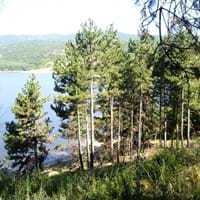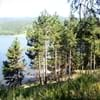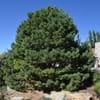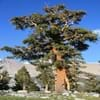Life Span
Perennial
Perennial
Type
Needled or Scaled Evergreen
Fruit
Origin
Eastern Europe, Southern Europe
Mexico, Central America
Types
Eastern Austrian Pine, Western Austrian Pine
Reinikie, Dade, Pike, Suebelle and Golden
Climate
Habitat
Wet ground, Wet lands
Tropical Highlands
USDA Hardiness Zone
4-8
8-11
Sunset Zone
A3, 2a, 2b, 3a, 3b, 4, 5, 6, 7, 8, 9, 10, 14, 15, 16, 17, 18, 19, 20, 21
H1, H2, 14, 15, 16, 17, 18, 19, 20, 21, 22, 23, 24
Habit
Oval or Rounded
Oval or Rounded
Flower Color
Green
Light Green, Ivory
Flower Color Modifier
Bicolor
Bicolor
Fruit Color
Brown
Light Yellow, Yellow green, Light Green
Leaf Color in Spring
Dark Green
Green, Dark Green
Leaf Color in Summer
Dark Green
Green, Dark Green
Leaf Color in Fall
Dark Green
Green, Dark Green
Leaf Color in Winter
Dark Green
Light Green
Leaf Shape
Linear
Alternate
Plant Season
Spring, Summer, Fall, Winter
Spring, Summer, Fall, Winter
Sunlight
Full Sun
Full Sun
Type of Soil
Loam, Sand
Loam, Sand
The pH of Soil
Acidic, Neutral, Alkaline
Acidic, Neutral
Soil Drainage
Average
Well drained
Bloom Time
Summer
Winter, Late Winter
Tolerances
Drought
Drought
Where to Plant?
Ground
Ground
How to Plant?
Cuttings, Layering
Budding, Grafting, Seedlings, Vegetative
Plant Maintenance
Medium
Medium
Watering Requirements
Average Water Needs
Do not water frequently, Needs more water during establishment, Water during dry weather
In Summer
Lots of watering
Lots of watering
In Spring
Moderate
Moderate
In Winter
Average Water
Average Water
Soil pH
Acidic, Neutral, Alkaline
Acidic, Neutral
Soil Type
Loam, Sand
Loam, Sand
Soil Drainage Capacity
Average
Well drained
Sun Exposure
Full Sun
Full Sun
Pruning
Remove damaged leaves, Remove dead branches, Remove dead leaves
Remove damaged leaves, Remove dead branches, Remove dead leaves
Fertilizers
All-Purpose Liquid Fertilizer
All-Purpose Liquid Fertilizer
Pests and Diseases
Red blotch
Red blotch
Plant Tolerance
Drought
Drought
Flowers
None
Insignificant
Flower Petal Number
Single
Single
Fragrant Flower
No
Not Available
Foliage Texture
Fine
Medium
Foliage Sheen
Not Available
Matte
Allergy
Asthma, Rash, Skin rash
drowsiness
Aesthetic Uses
Beautification, Cottage Garden, Formal Garden, Used in parkland
Not Used For Aesthetic Purpose
Beauty Benefits
Not Available
Not Available
Environmental Uses
Air purification
Air purification
Medicinal Uses
Not Available
Anti-carcinogenic effects, Colon Cancer
Part of Plant Used
Tree trunks
Fruits, Pulp, Seeds
Other Uses
Used as firewood, Used in construction, Used in Furniture, Used in pulpwood and lumber production, Wood is used for making furniture, Wood is used fore making tools, Wood is used in construction, Wood log is used in making fences
Used As Food
Used As Indoor Plant
No
No
Used As Outdoor Plant
Yes
Yes
Garden Design
Feature Plant, Screening, Wind Break, Shade Trees
Edible, Fruit / Fruit Tree, Shade Trees, Tropical
Botanical Name
PINUS nigra
CASIMIROA edulis
Common Name
European Black Pine
White Sapote
In Hindi
Austrian Pine
White Sapote
In German
Schwarzkiefer
White Sapote
In French
Pin noir d'Autriche
Sapote blanche
In Spanish
pino salgareño
White Sapote
In Greek
Η αυστριακή πεύκα
White Sapote
In Portuguese
Pinheiro-larício
White Sapote
In Polish
Sosna czarna
White Sapote
In Latin
Austrian Pine
White Sapote
Phylum
Tracheophyta
Magnoliophyta
Class
Pinopsida
Magnoliopsida
Clade
Not Available
Angiosperms, Eudicots, Rosids
Tribe
Not Available
Not Available
Subfamily
Not Available
Not Applicable
Number of Species
Not Available
Properties of Austrian Pine and White Sapote
Wondering what are the properties of Austrian Pine and White Sapote? We provide you with everything About Austrian Pine and White Sapote. Austrian Pine doesn't have thorns and White Sapote doesn't have thorns. Also Austrian Pine does not have fragrant flowers. Austrian Pine has allergic reactions like Asthma, Rash and Skin rash and White Sapote has allergic reactions like Asthma, Rash and Skin rash. Compare all the properties and characteristics of these two plants. Find out which of these plant can be used as indoor plant. If you are interested to decorate your house and garden, find out aesthetic uses, compare them and select the plant which will beautify your surrounding. Along with beautification, try comparing medicinal and edible uses of Austrian Pine and White Sapote and you can choose the plant having best and most benefits.
Season and Care of Austrian Pine and White Sapote
Season and care of Austrian Pine and White Sapote is important to know. While considering everything about Austrian Pine and White Sapote Care, growing season is an essential factor. Austrian Pine season is Spring, Summer, Fall and Winter and White Sapote season is Spring, Summer, Fall and Winter. The type of soil for Austrian Pine is Loam, Sand and for White Sapote is Loam, Sand while the PH of soil for Austrian Pine is Acidic, Neutral, Alkaline and for White Sapote is Acidic, Neutral.
Austrian Pine and White Sapote Physical Information
Austrian Pine and White Sapote physical information is very important for comparison. Austrian Pine height is 1,220.00 cm and width 610.00 cm whereas White Sapote height is 610.00 cm and width 760.00 cm. The color specification of Austrian Pine and White Sapote are as follows:
Austrian Pine flower color: Green
Austrian Pine leaf color: Dark Green
White Sapote flower color: Light Green and Ivory
- White Sapote leaf color: Green and Dark Green
Care of Austrian Pine and White Sapote
Care of Austrian Pine and White Sapote include pruning, fertilizers, watering etc. Austrian Pine pruning is done Remove damaged leaves, Remove dead branches and Remove dead leaves and White Sapote pruning is done Remove damaged leaves, Remove dead branches and Remove dead leaves. In summer Austrian Pine needs Lots of watering and in winter, it needs Average Water. Whereas, in summer White Sapote needs Lots of watering and in winter, it needs Average Water.





